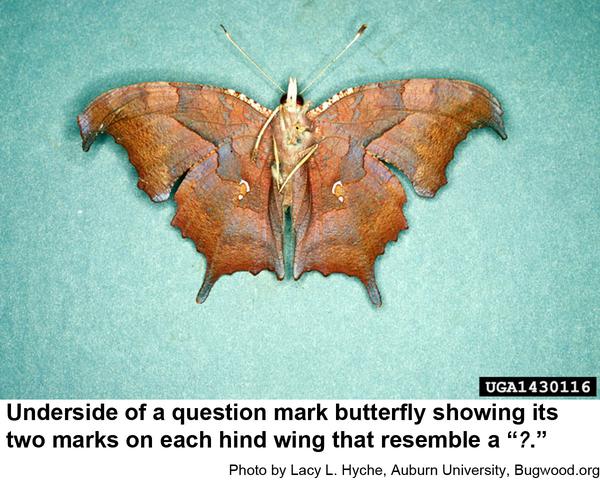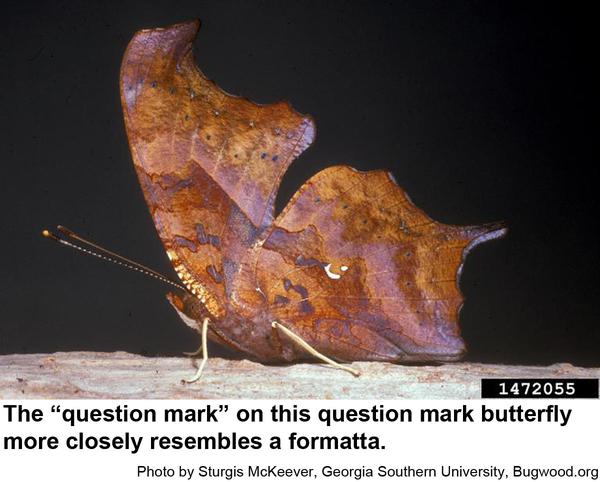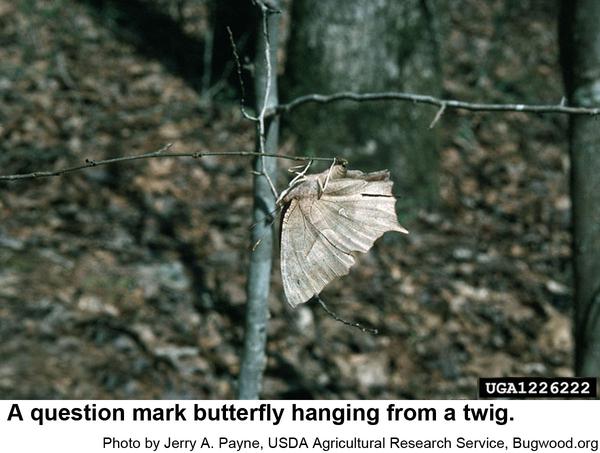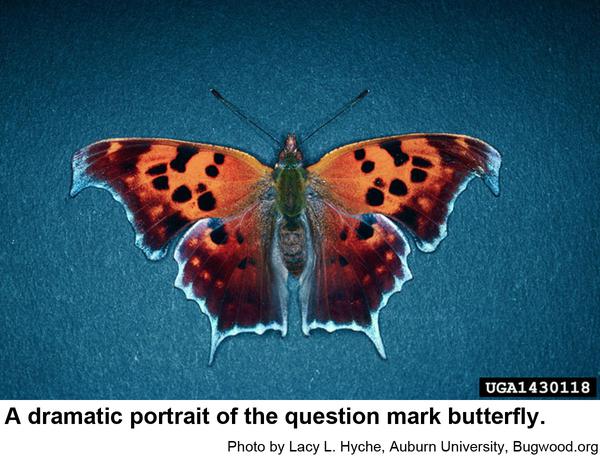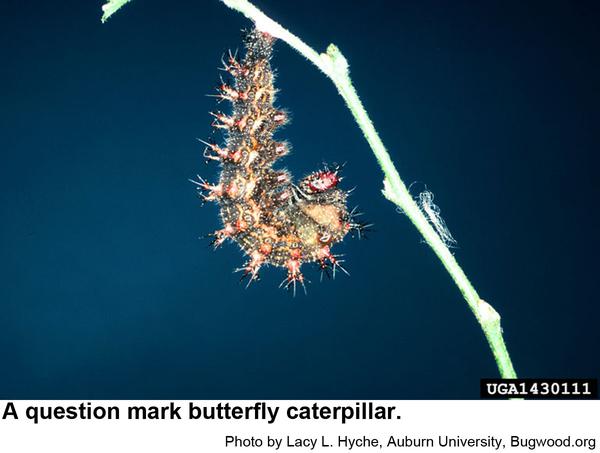Description and Biology
The question mark butterfly, Polygonia interrogationis, is one of the brush footed butterflies with ragged wing margins. Thses are called brushfooted butterflies because the first pair of legs resembles a narrow brush and these legs are held tight against the body so that these butterflies appear to have only four legs. The wing undersides mimic dead leaves when folded over the body, and there are usually two small, silvery markings on each hind wing that resemble a question mark on some specimens. The upper forewing surface is orange with black spots and irregular wing margins. The hind wings are dark especially toward the rear. Both wings usually have noticeable, white margins. The wingspan is 2 to 21/2 inches wide. Aside from visiting flowers for nectar, these butterflies feed on tree sap, rotting fruit, and even carrion and dung (ugh!). The green eggs are laid individually or even stacked up to four high under non-host plant foliage (The caterpillars usually hatch on one of only six plant species, yet do not feed on them.). The eggs have numerous vertical ridges. A week or two later, tiny, new caterpillars hatch and find their host plants to feed. Question mark butterfly caterpillars start life very small but eventually grow about 11/2 inches long. The head is reddish-brown head with short spines. These dark caterpillars have irregular, pale lines and speckles. Every segment has spiny protuberances giving the insect a distinctly spiny appearance. After 3 or 4 weeks each caterpillar molts into a pale or tan or dark brown chrysalis that has four white spots in two rows on the top of the thorax. After a week to 17 days, a new generation of question mark butterflies breaks out of the chrysalides. We have two life cycles per season, with the first flying, mating, and laying their eggs during the spring. The second generation appears in August.
Host Plants
Question mark butterfly caterpillars feed on American elm, false nettle, hackberry, hops, stinging nettles, sugarberry, and other plants.
Residential Recommendations
Should question mark butterfly caterpillars appear in alarming numbers, this insect should not be resistant to pesticides. Sevin and other insecticides labeled for residential landscape pest control should give more than adequate control of the caterpillars although it seems a un-American to kill a pollinator.
Other Resources
- Question Mark Butterfly. Anonymous. 2020. Butterflies At Home.
- Question Mark (Polygonia interrogationis). Anonymous. 2020. Butterfly Identification, Butterflies in USA.
- Question Mark Butterfly. Sain, T., Sr. 2019. Our Breathing Planet.
- Extension Plant Pathology Publications and Factsheets
- Horticultural Science Publications
- North Carolina Agricultural Chemicals Manual
For assistance with a specific problem, contact your local Cooperative Extension Center.
This Factsheet has not been peer reviewed.
Publication date: June 18, 2020
Revised: June 19, 2020
Recommendations for the use of agricultural chemicals are included in this publication as a convenience to the reader. The use of brand names and any mention or listing of commercial products or services in this publication does not imply endorsement by NC State University or N.C. A&T State University nor discrimination against similar products or services not mentioned. Individuals who use agricultural chemicals are responsible for ensuring that the intended use complies with current regulations and conforms to the product label. Be sure to obtain current information about usage regulations and examine a current product label before applying any chemical. For assistance, contact your local N.C. Cooperative Extension county center.
N.C. Cooperative Extension prohibits discrimination and harassment regardless of age, color, disability, family and marital status, gender identity, national origin, political beliefs, race, religion, sex (including pregnancy), sexual orientation and veteran status.

